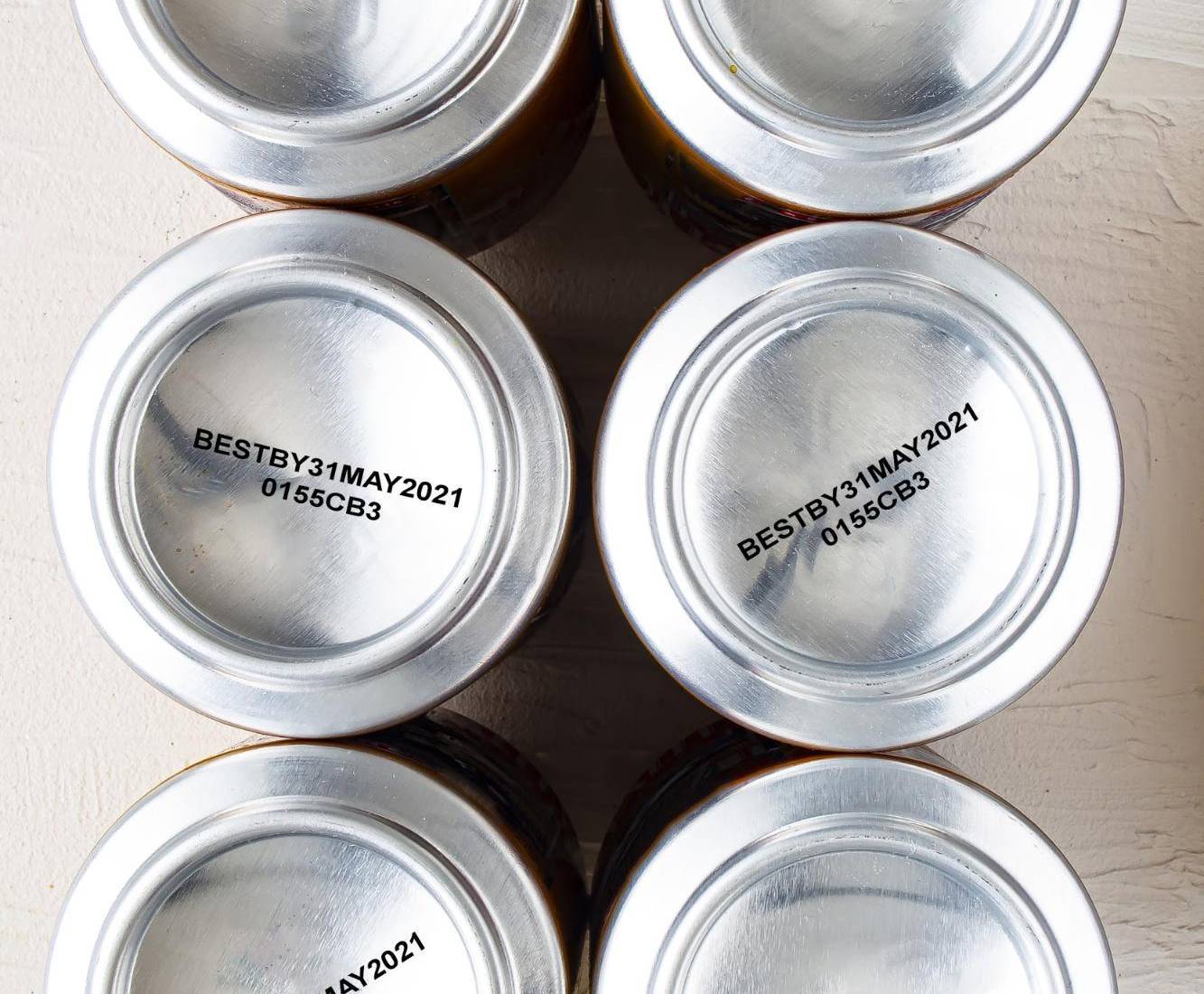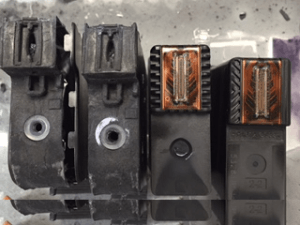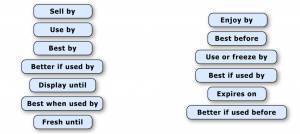Sep 11, 2020
New Funai Cartridges Offer Superior Coding and Marking for Industrial Printers


The Funai cartridge prints legible marking and coding for confidence in readability, unlike dot matrix characters produced with continuous inkjet systems.
We can all agree that dot matrix expiration dates and lot codes are hard to read. These are often illegible due to the disadvantages of continuous inkjet printing technology, which is typically used by industrial printers to mark products.
Product coding with continuous inkjet printing puts food and pharmaceutical brands at significant risk. Misreading an “O” for a “G” or “Q” could mean an unsafe or out-of-date product reaches consumers. Anyone with limited vision shouldn’t be expected to decode hardly readable dot lettering safely.
It’s time to retire the one-trick pony of continuous inkjet printing (CIJ) of dot matrix characters and numbers on products.
Until now, CIJ was the only option for cost-effectively marking products at a sufficient speed. Today, the revolutionary new Funai thermal inkjet cartridge produces legible coding with solid characters using Kao Collins Nexxo ink.
We’ll look at the features and benefits of the new Funai cartridge combined with Nexxo ink through a series of questions and answers that explain the advantages over continuous inkjet printing.
Funai TIJ beats CIJ Technology for Coding and Marking
If the legibility of the printed coding is not reason enough to begin using Funai technology or urging your current printer to switch, there are several more reasons to consider.
Does the Funai TIJ cartridge with Nexxo ink print faster than CIJ?
Yes. For almost every size of single or multi-lines of coding, the Funai TIJ cartridge outperforms CIJ technology – sometimes by a little and often by a lot.
Can the Funai cartridge with Nexxo ink print on curved surfaces?
Yes. The Funai cartridge has a throw distance of 10mm, twice the distance of other TIJ solvent ink cartridges. That’s one of the reasons continuous inkjet printing companies can switch to this thermal inkjet system.
High-quality ink and a larger drop size make it possible to print on curved surfaces and recessed surfaces like the bottom of a beer or soda can.
Funai’s cartridge prints flawlessly on curved plastic bottles or glass jugs.
Does the Funai TIJ technology require significant maintenance?
No. Unlike continuous inkjet systems with complicated electronics and ink recovery systems, no maintenance is required because the Funai cartridge is the printhead. There is no need for service contracts that drive up the cost of CIJ systems.
Do the cartridges require wiping and purging when using solvent inks?
 Depending on the solvent ink used, no. Some of the Kao Collins inks have a 24-hour decap time. Less downtime contributes to significant savings. The lost production during an hour of downtime of a continuous inkjet printer adds up.
Depending on the solvent ink used, no. Some of the Kao Collins inks have a 24-hour decap time. Less downtime contributes to significant savings. The lost production during an hour of downtime of a continuous inkjet printer adds up.
When combining no downtime with the line-speed advantage, the thermal system from Funai and Nexxo leads to greater production.
Can the Funai-Nexxo system print on the same substrates as CIJ technology?
Yes. The Funai cartridge holds heavy solvent inks, including MEK, ketone, alcohol, and acetate. That opens more possibilities for printing on more non-porous substrates with thermal inkjet than there ever were before.

Funai thermal inkjet cartridges, right, are compatible with heavy solvents.
Doesn’t the thermal inkjet cartridge degrade with heavy Nexxo solvent inks?
No. That’s the difference between the new Funai TIJ cartridge and other thermal cartridges. The cartridge is solvent-compatible, not just solvent-resistant.
Lack of solvent compatibility was an obstacle before introducing the new Funai technology.
What is the printing resolution?
Depending on the throw distance, expect up to 300 dpi to 600 dpi. Now a 2D barcode can be printed for reliable product scanning as it moves through the supply chain.
Examples
- Printing on flat surfaces with a ¼-inch throw distance, the cartridge can print up to 600×600 dpi.
- Printing on curved surfaces with a ½-inch throw distance, the cartridge can print up to 300×300 dpi.
Users can choose a range of resolutions to optimize speed and ink consumption. Readable text at 150×150 dpi can be printed at speeds up to 121 meters per minute with a 10mm gap. A ½-inch 2D barcode can be printed at 28 meters per minute at 300×300 dpi.
Is printing with the new Funai cartridges and Nexxo inks more eco-friendly?
NEXXO Prints 2D Codes on Curves
Get Started
Yes. Significantly lower VOCs are emitted compared with CIJ solvent systems. That is better for the environment and employees. The ink is contained in the cartridge, reducing emissions by up to 90%. Also, unlike continuous inkjet systems, no solvents are required for wiping, purging, and general cleaning.
Regulations to Improve Coding & Marking Legibility

SOURCE: U.S. Government Accounting Office
The food industry has focused on clearing up consumers’ confusion about product labeling. That’s understandable. The Grocery Manufacturers Association (GMA) and Food Policy Action Network commissioned a survey of 1,000 adults focused on food labeling and found ample evidence of uncertainty in consumers regarding food safety:
- 60% of Americans have discussed the meaning of date labels on food
- 40% of adults have had household disagreements over whether to keep or toss a food product
The United States Government Accounting Office has recommended that the USDA and FDA “develop a mechanism to facilitate coordination with relevant non-federal stakeholders on actions related to date labels.”
These are some of the food-quality phrases that are the source of confusion and disagreements.
- Sell By
- Best Before
- Expires On
- Use By
- Best By
- Enjoy By
This confusion leads to safety concerns and increased food waste.
Now it is time for the food and pharmaceutical packaging industry to look at the legibility of those messages and dates. The risk to brands and consumers is too significant not to revise the printing quality of the dates and messages.
Contact us. We can talk with you more about the new Funai cartridges and our NEXXO Ink.
READ MORE: What are the advantages of TIJ printing over CIJ printing






